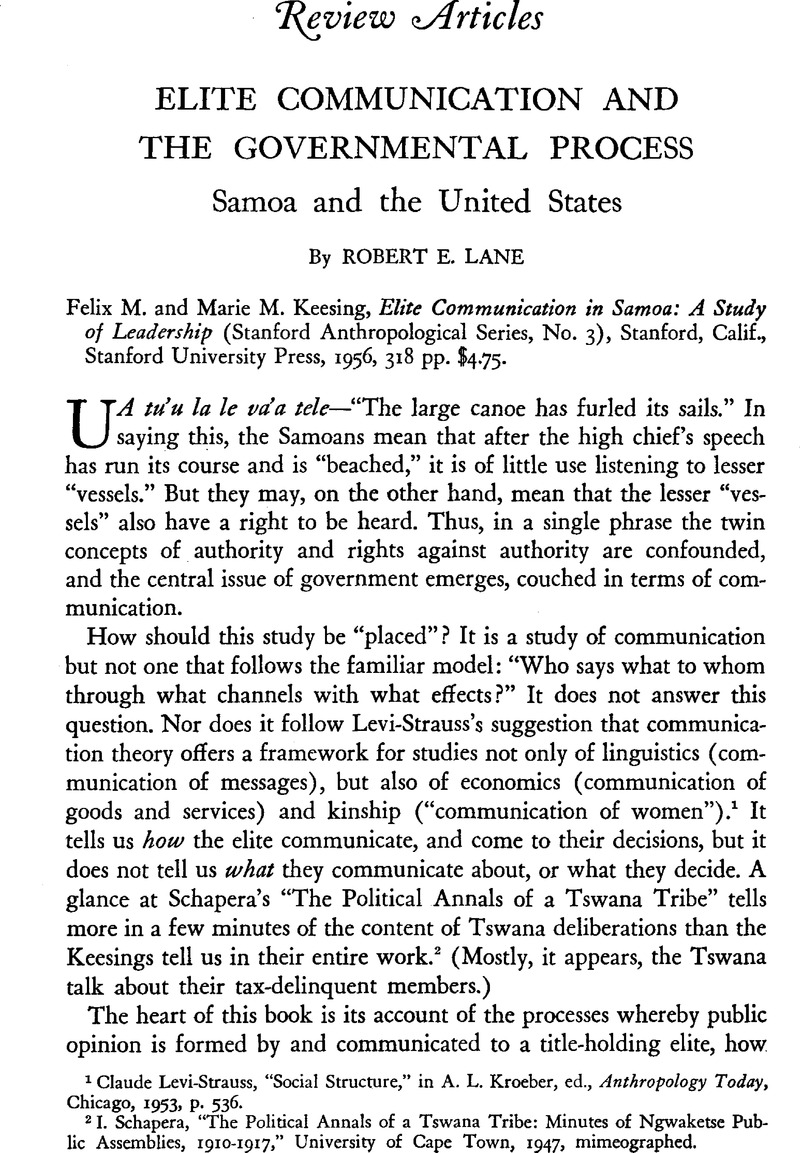No CrossRef data available.
Article contents
Elite Communication and the Governmental Process: Samoa and the United States
Published online by Cambridge University Press: 18 July 2011
Abstract

- Type
- Review Articles
- Information
- Copyright
- Copyright © Trustees of Princeton University 1958
References
1 Levi-Strauss, Claude, “Social Structure,” in Kroeber, A. L., ed., Anthropology Today, Chicago, 1953, p. 536.Google Scholar
2 Schapera, I., “The Political Annals of a Tswana Tribe: Minutes of Ngwaketse Public Assemblies, 1910–1917,” University of Cape Town, 1947Google Scholar, mimeographed.
3 Fortes, M. and Evans-Pritchard, E. E., African Political Systems, Oxford, 1940.Google Scholar
4 Mead, Margaret, Coming of Age in Samoa, New York, 1928.Google Scholar
5 To the extent that Floyd Hunter and C. Wright Mills are right and there is a fusion of elite functions at the “top,” the United States is reverting to the Samoan model—but with this difference: the Samoan chiefs are close to their people and immediately sensitive to their needs. See Hunter, Floyd, Community Power Structure, Chapel Hill, N.C., 1953Google Scholar, and Wright Mills, C., The Power Elite, New York, 1956.Google Scholar
6 Matmews, Donald R., The Social Background of Political Decision-Makers, Garden City, N.Y., 1954, pp. 42–55.Google Scholar
7 Each chapter in the Elmira study, Voting, concludes with a set of propositions and Appendix A lists 209 “findings or generalizations” from this and twelve other studies.
See Berelson, Bernard R., Lazarsfeld, Paul F., and McPhee, William N., Voting, Chicago, 1954.Google Scholar
8 Homans, Paul, The Human Group, New York, 1950.Google Scholar




